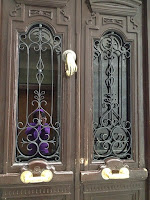At the start of this new academic year I have collated some of these activities and blog posts so that we can revisit and use these as we work through the academic year 2015 -2016.
Autumn Term
.....and we used a favourite KS1 language game too.It's called Crocodile Paths but became our Autumn leaves march :
Crocodile Paths -listening and responding- can the children make a marching rhyme of their favourite sounds. Create stepping stone cards om the floor of the sounds - repeated several times so for instance if we are using 6 sounds then we can have 4 sets of each sound so that there are 24 stepping stones. Ask the class to march across the stepping stones and say/sing their marching rhyme.Call "crocodile" and the children must freeze. Pull a one of the sounds written on small cards out of a bag or a box and say the sound for the class. any children stood on that sound stepping stone must sit out ...as the "crocodile has caught the child
We practised sounds with our Firework rhyme n KS1 and our Firework poem in KS2
KS1 Rockets and Firework Colour Song
Fireworks LKS2 performance poem
We created a simple Christmas greetings song and broke the song down in to sounds and bells and created a "Ding Dong Bell Phonics and Song activity
Ding !Dong! Bell!
Spring
We began the year with na celebration of epiphany and created letter string "galette des rois" and "roscon de reyes"
For Carnival we had our wonderful stretchy letter and sound carnival balloons!
Take a look Stretchy sound and letter carnival balloons
We hunted Easter egg sounds to create target language Easter greetings
Easter egg sounds
Summer
We went fishing for sounds Fishing for sounds



.JPG)
.JPG)

















